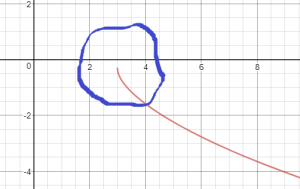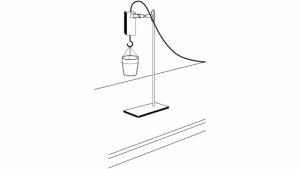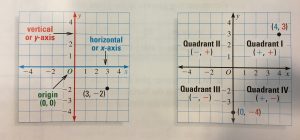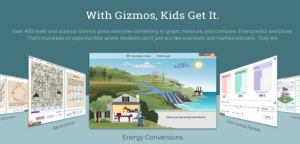Complex Numbers
This learning progression will be taught to a class that consists of sophomores and juniors in high school who are currently taking Algebra 2. The Common Core State Standards that will be addressed come from two different domains. The first domain is from High School: Algebra-Arithmetic with Polynomials and Rational Expressions. The CCSS Math cluster that will be addressed is “Understand the relationship between zeros and factors of polynomials.” The second domain is High School: Number and Quantity-The Complex Number System. The CCSS Math clusters that will be addressed are “Perform arithmetic operations with complex numbers,” “Represent complex numbers and their operations on the complex plane,” and “Use complex numbers in polynomial identities and equations.” The third domain is from High School: Number and Quantity-The Real Number System. The cluster that will be addressed is “Extend the properties of exponents to rational exponents.” Students will also meet Mathematical Practices 1, 2, 3, 7, and 8.
The textbook that I will use as a resource is Glencoe’s Algebra 2: Integration, Applications, and Connections. The lesson will be taught from sections eight through ten of chapter five of this book. These sections transition students from simplifying expressions including radicals and rational exponents to simplifying expressions containing numbers that are a part of the complex plane.
The central focus of this learning progression is an introduction to complex numbers and the complex plane. The progression begins with the strategies that are used in simplifying expressions involving radicals. These strategies will help student s understand how to use complex numbers and how to simplify expressions that contain complex numbers. Students will be first introduced to what a complex number is and will then learn how to graph them in the complex plane. The purpose of this learning progression is for students to gain a better conceptual understanding of the complex plane and will lead into solving quadratic equations that do not have real solutions. This progression is set up so that the entry tasks from each section review a concept or ask students to think critically about a problem that will help them understand the new information that will be taught during the lesson. How students do on this introductory information will influence where each lesson begins. This will then influence how far we get in the planned lesson and so the next day’s lesson will also be affected. Each lesson has been set up to be flexible and to run off of the previous lesson. Beginning the class with questions that lead students to recall information that they have previously learned and to explore a new way of thinking will help students be more successful during the remainder of the class period and will help students become more interested in what they are learning. Kubiszyn and Borich state in the book Educational Testing and Measurement that by imbedding a formative assessment into each lesson, “well-constructed performance test can serve as a reaching activity as well as an assessment. This type of assessment provides immediate feedback on how learners are performing, reinforces hands-on teaching and learning…it moves the instruction toward higher order behavior.”
Common Core State Standards
Extend the properties of exponents to rational exponents.
CCSS.MATH.CONTENT.HSN.RN.A.1
Explain how the definition of the meaning of rational exponents follows from extending the properties of integer exponents to those values, allowing for a notation for radicals in terms of rational exponents.
CCSS.MATH.CONTENT.HSN.RN.A.2 Rewrite expressions involving radicals and rational exponents using the properties of exponents.
Perform arithmetic operations with complex numbers.
CCSS.MATH.CONTENT.HSN.CN.A.1
Know there is a complex number i such that i2 = -1, and every complex number has the form a + bi with a and b real.
CCSS.MATH.CONTENT.HSN.CN.A.2
Use the relation i2 = -1 and the commutative, associative, and distributive properties to add, subtract, and multiply complex numbers.
CCSS.MATH.CONTENT.HSN.CN.A.3
(+) Find the conjugate of a complex number; use conjugates to find moduli and quotients of complex numbers.
Mathematical Practices
CCSS.MATH.PRACTICE.MP1 Make sense of problems and persevere in solving them.
CCSS.MATH.PRACTICE.MP2 Reason abstractly and quantitatively.
CCSS.MATH.PRACTICE.MP3 Construct viable arguments and critique the reasoning of others.
CCSS.MATH.PRACTICE.MP7 Look for and make use of structure.
CCSS.MATH.PRACTICE.MP8 Look for and express regularity in repeated reasoning.
Learning Progression
Learning Progression-Complex Numbers-164vuer








